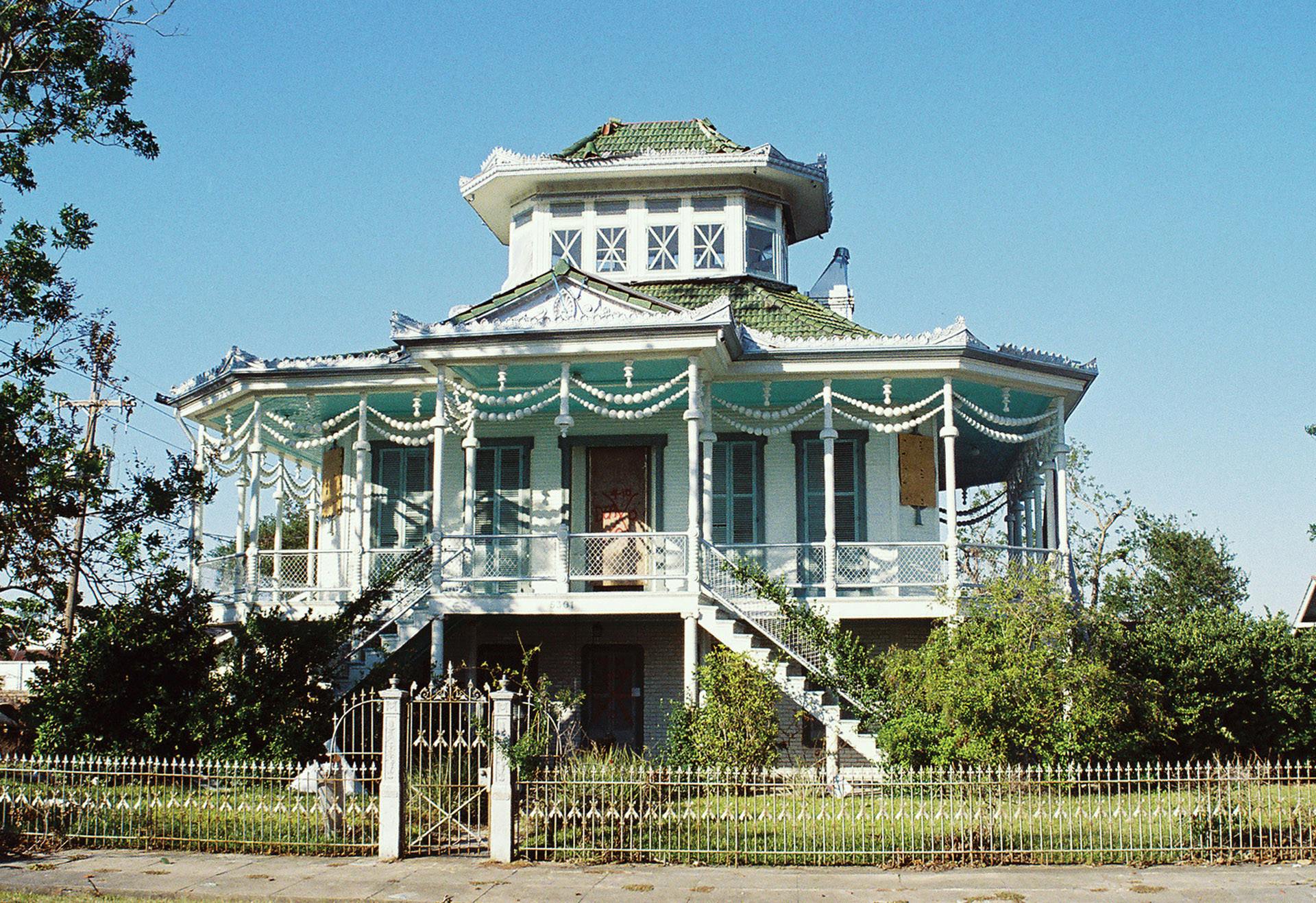Gulf Coast and New Orleans Emergency Sites

When Hurricane Katrina swept across New Orleans and the Gulf Coast region, local communities and sites of remarkable cultural and architectural heritage were devastated.
Historic Gulf Coast
Beyond cuisine and music, New Orleans is known for its unique built Franco-Creole environment. Twenty of the city’s districts are on the National Register of Historic Districts, and no fewer than 35 are recognized as historically significant. Many individual buildings are landmarked and of high architectural value.
Early Intervention
This rich historic repository was threatened and in some cases forever changed in 2005, when Hurricane Katrina swept across New Orleans and the Gulf Coast region, devastating local communities and a remarkable cultural and architectural heritage. When the federal flood protection system’s levees and floodwalls failed, 80% of New Orleans was left underwater and a mandatory evacuation of the city was ordered. Other coastal cities including Mobile, Gulf Port, and Biloxi, as well as historic district Bay St. Louis, also lost a number of culturally significant sites in the wake of Hurricane Katrina.
Sensitive to the fact that humanitarian relief comes before heritage preservation, we recognized that early intervention could help prevent catastrophic long-term cultural losses. In 2006, the region was included on the World Monuments Watch as an emergency listing and we began immediate disaster relief efforts in the area. Focusing on the Holy Cross and New Marigny districts in New Orleans, and Bay St. Louis and Biloxi in Mississippi, we, in an unprecedented collaboration with the National Trust for Historic Preservation, developed a four-part program to address the damage done to the region’s built heritage.
Restoring Sites and Structures for Generations to Come
Emergency assistance was deployed to develop preliminary stabilization measures and conduct immediate structural assessments in the most severely impacted areas. Then, alternatives to demolition were devised. Drawing upon national and international precedents, we developed restoration and treatment guidelines, and widely distributed them to historic property owners, private groups, and public agencies; design guidelines that elucidated respect for historic typologies, scale, and materials were emphasized. Finally, the program initiated a series of strategic intervention grants targeting significant sites in need of immediate stabilization and conservation measures to prevent their loss.
Revitalization Efforts
Hurricane Katrina was the United States’ costliest natural disaster. New Orleans and the towns along the Mississippi Gulf Coast contain some of the country’s most valuable cultural and architectural assets; housing typologies and neighborhood design represent a built heritage unique to the southern United States. Our support and partnerships in the region are requisite for saving what still stands, and restoring these sites and structures for generations to come. Investing in the area’s heritage also contributes to the revitalization of its communities and citizens, bolstering pride and fostering commitment from local stakeholders, as well as professional and governmental organizations nationwide.


Related Projects

Lafayette Cemetery No. 1
Credits
World Monuments Fund's work at the Gulf Coast and New Orleans Emergency Sites has been made possible, in part, by The Florence Gould Foundation; American Express; the Nathan Cummings Foundation, with the support and encouragement of Ruth Cummings Sorensen, Clea Driscoll and Roberta F. Cummings; Deutsche Bank Americas Foundation; and the Hickory Foundation.



